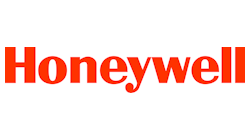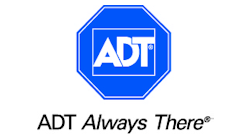Catch the Z-Wave
With so many wireless technologies competing in the smart home space, Z-Wave technology has established a dominant market position in the residential security channel. In fact, in North America, virtually all security-based “lifestyle” or remote home management solutions are powered by Z-Wave.
There are many reasons for Z-Wave’s position in a market where there is an abundance of choices for individual smart devices, like locks, smoke detectors and lighting and communications standards such as Wi-Fi, Bluetooth, NFC, ZigBee, EnOcean and a handful of others.
Scalability, reliability and economy are three good reasons, but perhaps Z-Wave’s most compelling advantage is interoperability. Z-Wave is the only technology to assemble more than 1,100 interoperable products from 300-plus manufacturers worldwide — no other technology can claim this large an ecosystem.
Benefits of Interoperability
The benefits of an interoperable ecosystem have proven obvious to security integrators and attractive to their customers. Flexibility is the key — by providing a common protocol to smart devices throughout the home, integrators can enjoy more selection in terms of products and suppliers. This can also be satisfying to an end-customer if, for example, they prefer one door lock vendor over another. When both work exactly the same way with the rest of the system, the integrator can offer the choice without concern about integration.
Interoperability also enables the installation to scale seamlessly, not only by size, but by application. With Z-Wave, today’s security systems can keep guard over potential water damage through smart valves, manage electrical consumption though smart AC outlets, and manage ambient lighting with smart window and skylight controls. Not every customer wants all these features initially, but many become interested over time. By offering so many different smart devices in so many applications, the customer can build systems over time, and the installer can build revenues accordingly.
With the just-released Z-Wave over IP standard, all Z-Wave endpoints can now sport an IPv4 or IPv6 address — making every Z-Wave object individually addressable via the Internet.
What Customers are Asking For
Lifestyle security capabilities have taken what was a relatively flat security industry and energized it into annual growth of 15-20 percent. A good indicator of how smart home functions are being eagerly adopted by consumers comes from a recent analyst report on ADT, which uses Z-Wave in its Pulse system. While ADT is not alone in its choice of Z-Wave — the technology also powers security systems by Honeywell, Linear, Nexia, Vivint, and many others — its success with lifestyle security is a good example for the rest of the industry, and points to great opportunity for security integrators of all sizes.
The recent report, conducted by the analyst group Terrier Investing, details some provocative insights about what customers want from their security system; in addition to what selling smart home capabilities can mean for the security provider. At the top of the list is impressive proof of customer demand. Among new customers, ADT reported a 64-percent take rate for its Pulse smart system. When nearly two-thirds of new customers are saying yes to smart home capabilities — with the vast majority citing security as the primary buying criterion — it sends a clear message about the value that customers see in smart home technology, and the benefits it brings to their lives.
Unlike the early days of smart home deployments, these benefits are no longer exotic and difficult to sell. ADT reports that in Q2 of this year, 43.5 percent of all new and existing clients will adopt the company’s Pulse system. That’s an astronomical jump from a 3.4-percent adoption rate recorded only three years prior.
What does all this mean? It shows that smart home capabilities have now gone mainstream in terms of consumer demand. For the security dealer/integrator, it means more profitability, in terms of both initial and future revenue opportunities. More devices at install mean higher profitability; greater services and scalability over time mean more RMR and less churn. While this analyst report represents only one company, the implications and opportunities demonstrated should be clear to all security integrators.
Consumer Freedom
Another advantage to the Z-Wave ecosystem is that consumers can add their own devices into an existing deployment without fear of breaking the system, and with the knowledge that each new device speaks the same wireless language as the rest of the installation. This DIY advantage is rarely used, as consumers usually opt to have the security integrator perform system extensions and upgrades; still, it is a selling point that helps customers feel more in control of their installation.
Because Z-Wave offers so much flexibility, it gives the security provider new capabilities and applications that would ordinarily not have been part of the conventional security mix. One example is “connected aging” solutions, an extension of the home security system that focuses on seniors aging in place. While this sounds like a new category, it is in fact merely an extension of a conventional lifestyle security deployment.
Consider how simple it is to extend a Z-Wave based security system into a senior monitoring system. The logic stays consistent: sensors record activity, locks are remotely operable, interior and ambient lighting can be scheduled, and so on. The devices stay largely the same — what has changed is the perspective toward activity and the desired parameters for notifications and response. A senior monitoring deployment is simply a security deployment with specialization.
From the standpoint of a conventional home security system, the best activity is no activity — a motion sensor untriggered means there has been no unwanted activity; however, what if activity was, in fact, not only desirable, but something of keen interest from a monitoring perspective? Caregiving Boomers want to know about the daily activity of their aging parents or, more importantly, the lack of it —or if there are excessive trips to the bathroom; if sleep is interrupted nightly; if there aren’t enough trips to the kitchen for proper diet. These are critical questions that can easily be addressed through simple monitoring, using many of the same components as a traditional security system, and all controllable through the interoperable Z-Wave system.
Other smart applications such as energy conservation and remote property management are easily added to the core installation, because so many different types of Z-Wave devices are available.
Mark Walters is Chairman of the Z-Wave Alliance, a consortium of more than 300 leading manufacturers and service providers worldwide dedicated to interoperable wireless control products based on the Z-Wave open standard.




